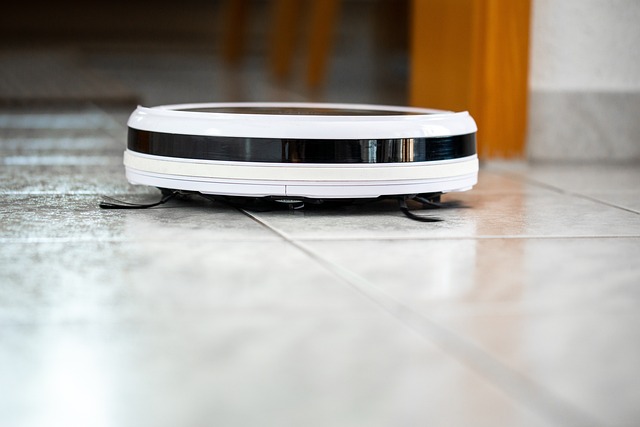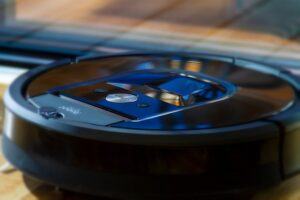Welcome to our exploration of the fascinating world of robot vacuum mapping. In this blog post, we’ll delve into the inner workings of robot vacuum mapping technology and unravel the mystery behind how these intelligent devices navigate and clean our homes.
Have you ever wondered how a robot vacuum knows where to go and what areas it has already cleaned? Or maybe you’ve pondered the technology behind creating a map of your home for efficient cleaning? Throughout this post, we’ll address these questions and more, shedding light on the intricate algorithms and sensors that enable robot vacuums to map and navigate through your living space.
We’ll discuss the various mapping technologies employed by different robot vacuum brands, explore the role of sensors such as LIDAR, cameras, and infrared sensors in mapping, and examine how these devices adapt to different environments. By the end of this post, you’ll have a comprehensive understanding of the science behind robot vacuum mapping and how it has revolutionized the way we clean our homes. So, let’s embark on this enlightening journey into the world of robot vacuum mapping!
What is Robot Vacuum Mapping?
Robot vacuum mapping is the process by which a robotic vacuum cleaner navigates and cleans the floor of a home or space. It involves the use of sensors, cameras, and mapping technology to create a virtual map of the area to be cleaned. How does this technology allow robot vacuums to efficiently navigate and clean different floor plans and room layouts? What are the key components involved in robot vacuum mapping, and how do they work together to ensure effective cleaning?
Benefits of Robot Vacuum Mapping
Robot vacuum mapping offers several key benefits for efficient and effective cleaning. Firstly, by utilizing advanced mapping technology, robot vacuums can navigate and clean a variety of floor plans and room layouts with precision. This ensures thorough cleaning without repeatedly going over the same areas, saving time and energy.
Additionally, robot vacuum mapping allows for customizable cleaning schedules and targeted cleaning of specific areas, providing users with the convenience of automated cleaning tailored to their specific needs. Moreover, the ability of robot vacuums to create and store maps of the cleaning area enables them to resume cleaning from the exact point where they left off, enhancing overall cleaning efficiency.

Understanding the Technology Behind Robot Vacuum Mapping
Robot vacuum mapping technology relies on a combination of sensors, software, and algorithms to navigate and clean spaces autonomously. These sensors typically include laser distance sensors, cameras, ultrasonic sensors, and various other types of environmental sensors. The robot vacuum uses these sensors to create a map of the cleaning area, which it then uses to efficiently navigate and clean the space.
The robot vacuum’s onboard software processes the data from the sensors in real-time, allowing it to make decisions about its cleaning path and avoid obstacles. Advanced algorithms enable the robot vacuum to understand the layout of the environment, recognize obstacles, and plan an efficient cleaning route. This technology allows the robot vacuum to adapt to changes in the environment and avoid getting stuck or causing damage to furniture and other objects.
Additionally, some robot vacuums incorporate simultaneous localization and mapping (SLAM) technology, which enables the device to continuously update its map of the cleaning area as it moves around. This ensures that the robot vacuum can accurately remember where it has already cleaned and where it still needs to clean, resulting in thorough and efficient cleaning performance.
Moreover, many modern robot vacuums are equipped with Wi-Fi connectivity and companion mobile apps, allowing users to interact with and control the device remotely. This connectivity enables homeowners to schedule cleaning sessions, monitor the robot vacuum’s progress, and even create virtual boundaries or no-go zones within the cleaning area, enhancing the overall cleaning experience.
In summary, the technology behind robot vacuum mapping leverages a sophisticated combination of sensors, software, and algorithms to enable autonomous navigation, efficient cleaning, and user-friendly control. This advanced technology represents a significant advancement in the field of home automation and has transformed the way people maintain clean and tidy living spaces.
Comparison of Robot Vacuum Mapping Algorithms
When it comes to robot vacuum mapping, there are different algorithms used to navigate and map the cleaning area. One popular algorithm is simultaneous localization and mapping (SLAM), which allows the robot to create a map of its environment while simultaneously tracking its own location within that environment. Another common algorithm is the random bounce algorithm, where the robot moves in a random pattern until it covers the entire cleaning area.
SLAM algorithms are known for their accuracy in mapping and navigation, allowing the robot vacuum to efficiently cover the entire cleaning area without missing spots. On the other hand, random bounce algorithms may result in less efficient cleaning patterns, potentially requiring more time to cover the entire area compared to SLAM-based robots. Additionally, some advanced robot vacuums may utilize a combination of algorithms to optimize their cleaning performance, such as using SLAM for mapping and navigation while incorporating other algorithms for specific cleaning tasks.
The choice of algorithm can significantly impact the overall cleaning efficiency and coverage of a robot vacuum. For example, SLAM-based robots are often praised for their ability to navigate complex environments with precision, making them well-suited for homes with multiple rooms and obstacles. Conversely, random bounce algorithms may be more suitable for simpler, open floor plans where precision mapping is less critical.
Ultimately, the comparison of robot vacuum mapping algorithms underscores the importance of understanding the technology behind these intelligent cleaning devices. By evaluating the strengths and limitations of different algorithms, consumers can make informed decisions when selecting a robot vacuum that best suits their specific cleaning needs.
Maximizing Efficiency with Robot Vacuum Mapping
Robot vacuum mapping technology maximizes efficiency by creating accurate maps of the cleaning area, allowing the robot vacuum to navigate in the most efficient manner possible. This ensures that the robot vacuum covers the entire area without unnecessary repetition or missing spots, saving time and energy in the process.
By understanding the layout of the space through mapping, the robot vacuum can plan its route intelligently, avoiding obstacles and efficiently cleaning around furniture and other objects. This results in a more thorough and effective cleaning performance, ultimately maximizing the efficiency of the robot vacuum.
The Bottom Line: Enhancing Your Home Cleaning with Robot Vacuum Mapping
Robot vacuum mapping technology enhances your home cleaning by efficiently navigating and cleaning different floor plans and room layouts, allowing for customizable cleaning schedules and targeted cleaning of specific areas. With the use of simultaneous localization and mapping (SLAM) technology and Wi-Fi connectivity, robot vacuums can create accurate maps of the cleaning area, maximizing efficiency and ensuring thorough cleaning.

